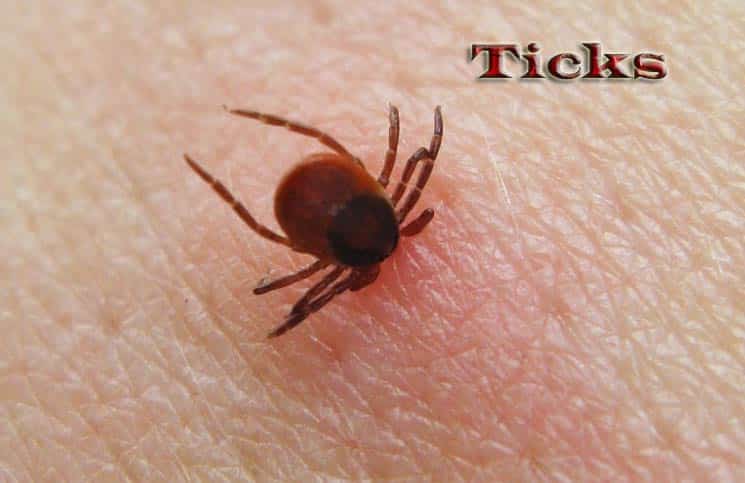Table Of Content

“Less than 50% of children show generalized signs of illness like chills, headache, fatigue, muscle and joint aches. As a former realtor, general contractor and greenhouse operator, Kristi has touched nearly all aspects of homeownership, from the foundation up. Today, Kristi is a full-time investing and real estate journalist working with notable publications such as Forbes, US News and World Report and The Motley Fool. Also examine your backpacks, tents, and any other gear you took with you outdoors. "Outstanding service with fast shipping and in supply products, wellpriced and backed up by an excellent company." 410 of 436 people found this article informative and helpful.
Safe Tick Repellents for Dogs – Tap Here
Here's How to Prepare Your Home for the Tick Explosion - Family Handyman
Here's How to Prepare Your Home for the Tick Explosion.
Posted: Wed, 17 Apr 2024 07:00:00 GMT [source]
The best way to avoid this is to keep your dog on a high-quality flea and tick treatment from your veterinarian. Ticks don’t generally do much damage to yards, but they can make you and your pets very sick. Diseases like Lyme disease, Rocky Mountain spotted fever and alpha-gal syndrome can be life-changing to you; your pets can also contract serious diseases like ehrlichiosis or babesiosis.
Use a Tick Repellent
After removal, clean the area with an antiseptic, such as rubbing alcohol or soap and water. Place the tick in a plastic bag in case you develop any symptoms that may be caused by a tick-borne infection. Early symptoms can include fever, chills, headache, joint pain and gastrointestinal upset, which can occur in various combinations. If you experience any of these and may have been exposed to ticks, see your health care provider right away. Crappy food, over vaccination (do your research!! It’s a big pharma scam to make money and it sickens our pets) and prescription meds all take a toll on your pets health. Your pet may look healthy, but obviously, if parasites find them irresistable, there’s your sign.
How to Keep Ticks From Ruining Your Maine Summer - Down East
How to Keep Ticks From Ruining Your Maine Summer.
Posted: Thu, 11 Apr 2024 19:33:31 GMT [source]
Pest Control
Still, it’s a good idea to wear a mask, goggles, and gloves while you are spreading it—the powder can cause lung damage with long-term use, and can also irritate skin and eyes. Ticks are parasitic arachnids that survive by feeding on the blood of a variety of animals, including mammals, birds, reptiles and amphibians. Ticks like to hang out in wooded or brushy areas and attach themselves to animals and humans that brush against them. Various types of ticks are spread throughout North America. Ticks (and their nymphs) transmit a number of serious diseases and in some cases can also cause allergies and anemia. If you don't wish to use chemical repellents in your yard, there are plenty of natural and eco-friendly remedies that you can make.
15 Plants to Grow for a Pest-Proof Yard
Insect pests complete their lifecycle through either simple or complex metamorphosis. Complex metamorphosis involves an insect changing from egg to larva (caterpillar) to pupa to adult. A jumbled, shaded woodpile is also a perfect habitat for mice and other small rodents that often serve as the first host to tick larvae and nymphs. The fewer hosts in your yard, the less likely ticks will survive there. Here’s what to do to get rid of a tick in the house and tips on how to avoid having a tick in the house again.
Keep an eye on your pets
Swallows and doves may get trapped in your attic by accident. No matter what kind of bird it is, it’s important to have them removed before they cause significant damage. After removing the tick, the CDC recommended thoroughly cleaning the bite area and your hands with rubbing alcohol, an iodine scrub or soap and water. Using a powder duster (sometimes included), sprinkle diatomaceous earth around your yard, making a line around one to two inches thick. This will kill or keep out any ticks that attempt to pass through, and will also protect your lawn and plants. Typically, ticks are commonly found in the 3 to 4-foot perimeter surrounding your yard.
Essential oils
Keeping weeds and brush away from your home and maintaining your lawn will help you get rid of ticks near your property. My advice, if you are a pet owner, stop running to the vet for every little thing. There are a TON of things you can do to treat and protect yourself and your pets without using dangerous products, but you’ll actually have to do a little research. BEFORE you put anything on or in your pet, do a search for “_______ killed my cat/dog” and see how many results pop up. One death is too many for me after watching my perfectly healthy dog who only suffered from arthritis die a slow and painful death.
How we reviewed this article:
Remember to check yourself, family members and your pets for ticks after being outdoors. Other ways to get rid of ticks include removing plants that deer love, adding plants that ticks do not care for, mowing the grass often, and deterring small host animals. Check pets when they return from walks or play in possible tick-prone areas. Avoid tall grasses, shrubs, and leaf litter where you walk or children play. When venturing out in nature, wear long sleeves, pants, high socks, and shoes. Finally, consider using a natural bug spray when outside, and be sure to thoroughly check for ticks on your clothing and body after spending time outdoors.

These technicians have the experience, products, and equipment to eliminate a tick infestation and keep it from returning. Regularly check your pets for ticks and apply tick prevention. Ticks are more commonly found on animals that are allowed to roam outside. If you find a tick on your pet, remove it and call your veterinarian. You can also buy certain medications for your pet that prevent ticks from attaching.
Ticks are known to transmit a number of serious diseases including Lyme disease, Rocky Mountain spotted fever, and tularemia. Many tick treatments involve the application of pesticide that can cause harm to humans and pets if used improperly. There are steps you can take to prevent ticks from getting to your skin in the first place. Try to avoid areas where ticks are found, such as tall grasses, shrubs and leaf litter. When you go outside, wear long sleeves and pants, as well as sock and shoes. If you think you may come in contact with ticks, protect yourself further by spraying exposed skin with a repellent containing DEET or picaridin.
If you call in a professional, they will likely use a net to remove a bird from an attic. Pest control companies can also provide a deodorizing and decontamination service. The price will vary on the complexity of the project and the state of your attic. During the warmer weather, it’s not unheard of to find birds nesting in your attic. However, that means the avian creatures found their way in, likely through an opening in the roof or siding that was not sealed properly.
Any of these or a combination can be used in DIY sprays or added to almond oil and rubbed on exposed skin. We recommend using 100% certified organic essential oils in any of the above mixtures, which can be found online. American dog ticks are larger ticks, reaching up to 1/4 inch unfed and 1/2 inch after a meal.
You can also wear long-sleeved shirts and tuck your pants into your socks while hiking on trails or in wooded areas. You may also buy certain types of clothing that contain insect repellant in the fabric. Tick infestations can occur when just one tick is brought into the home. The tick will attach itself somewhere on your body and bury its head into your skin.
Your doctor can give you the correct diagnosis and prescribe the right antibiotic for treatment. After a tick is brought into your home, a tick infestation may occur once the tick reproduces. However, they typically lay their eggs near baseboards, window and door frames, furniture, edges of rugs, and curtains.












